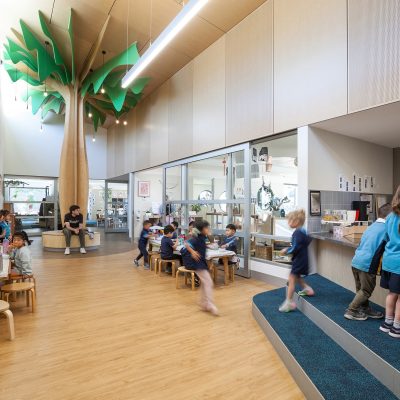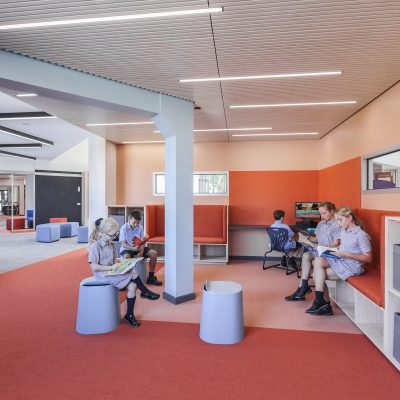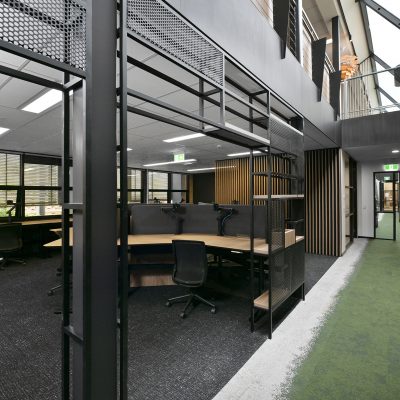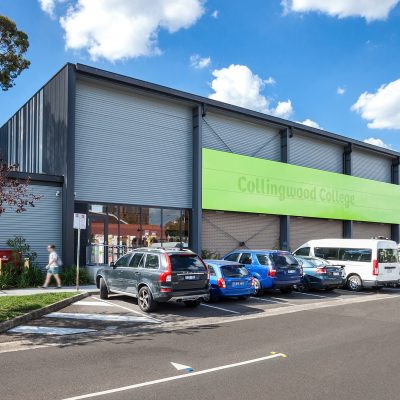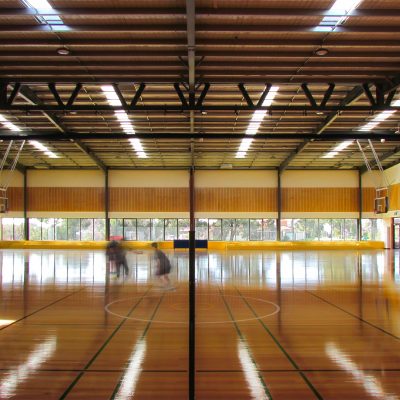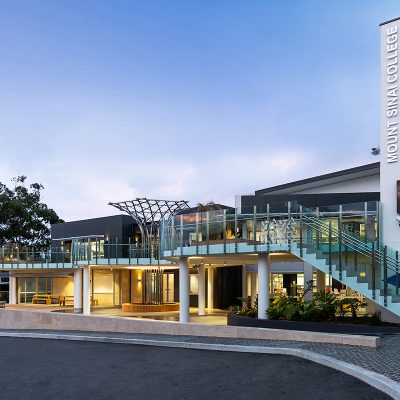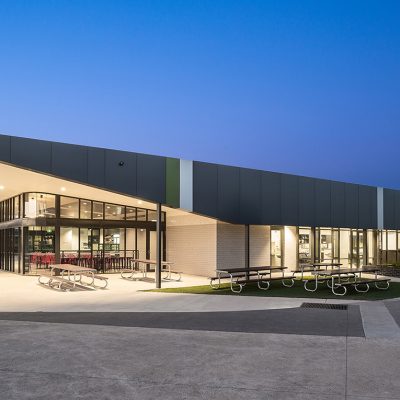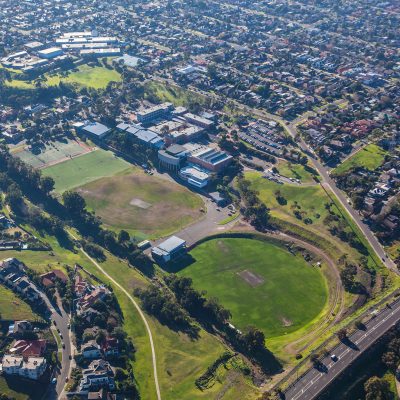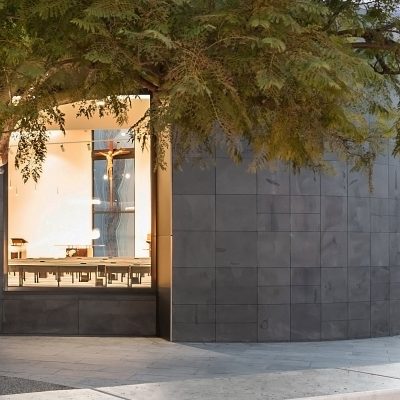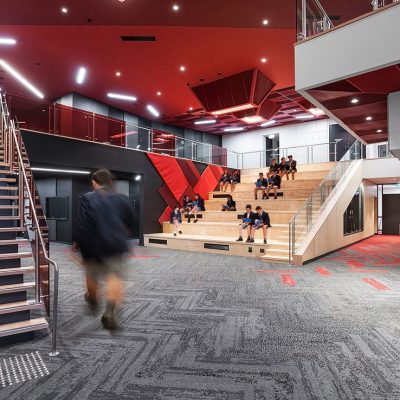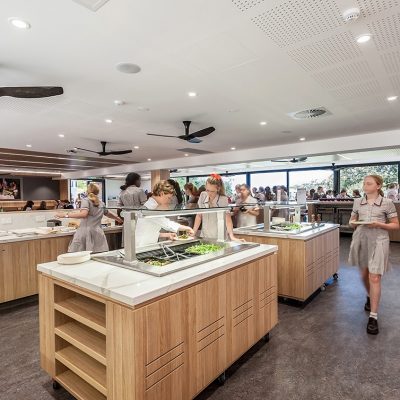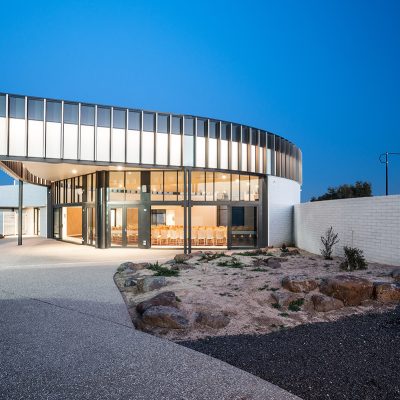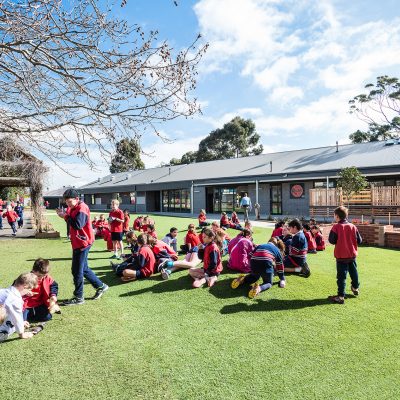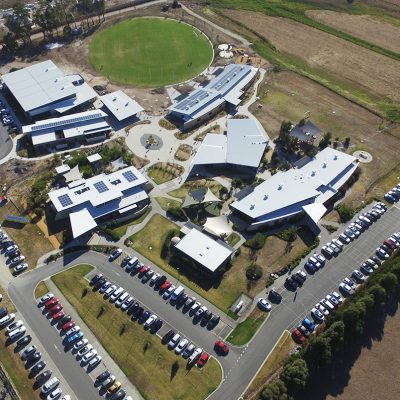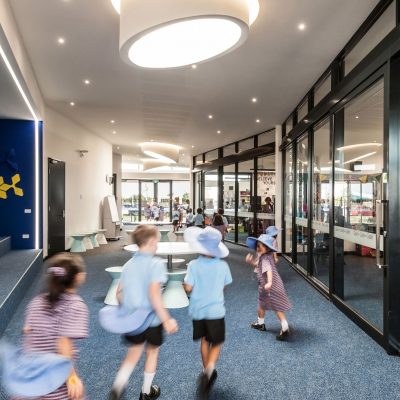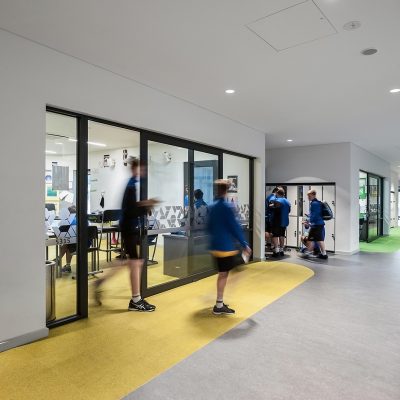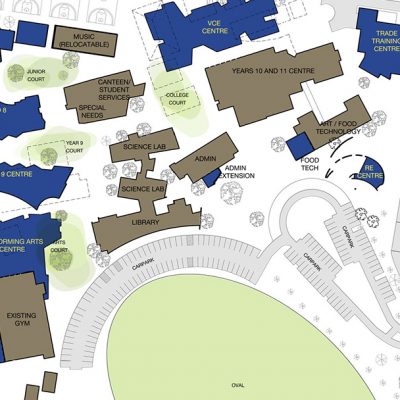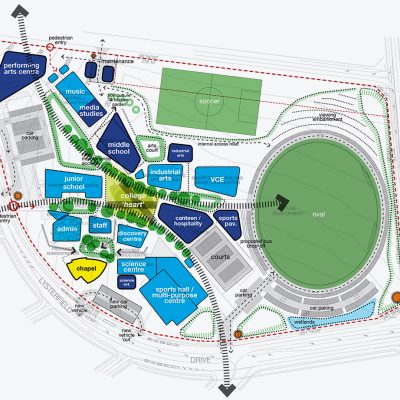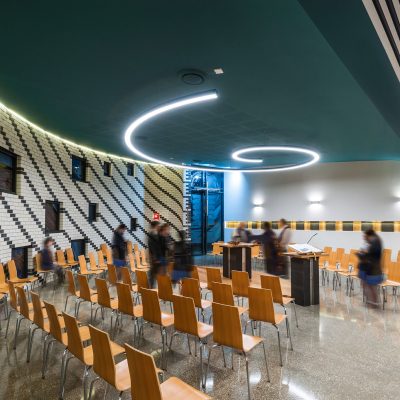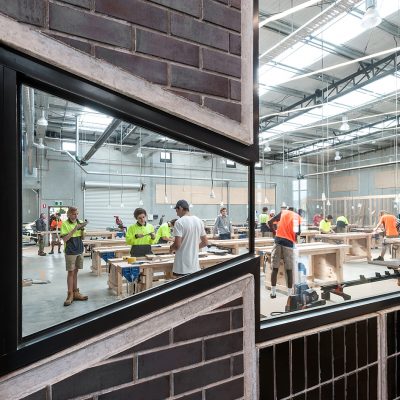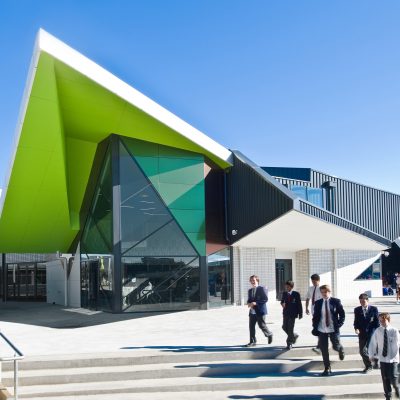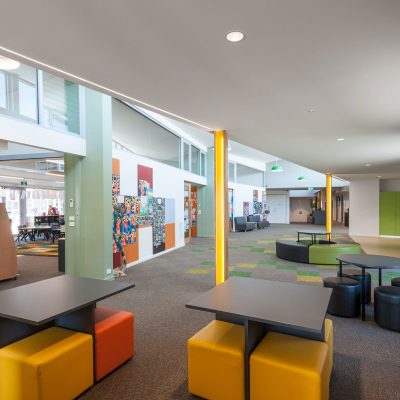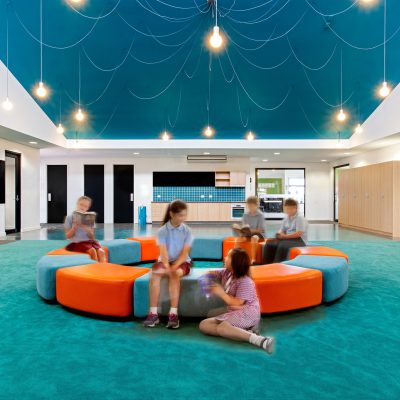The new general learning cluster building was developed through a collaborative and consultative process with the St Paul’s Anglican Grammar School community. Part funded through the VIS BGA Fast Track process, the John McIntyre Centre formed the first stage of the 2014 Strategic Masterplan. The educational environment created in the John McIntyre Centre is reflective of the connected and inclusive vision the school has for learning.
The John McIntyre Centre provides a stimulating environment that is inspiring senior learners through engagement and inclusion. Built across two levels, the eight adaptable learning areas, with six small student withdrawal rooms, open onto a breakout learning street providing an interactive hub. The ground floor common space has been designed to extend into outdoor landscaped courtyards providing additional opportunities for learning and socialisation; while the first floor has a bridge link connecting to an adjacent higher terrace level and VCE Centre.
The learning is highly visible and accessible throughout the Centre, creating a strong sense of ‘community’, enabling staff, students and school visitors to feel welcome and part of the learning process.
The transparency of spaces has achieved ‘accountability’ where teachers and students are encouraged to ensure their ‘best self’ is on display to others; and the promotion of ‘trust’ and ‘respect’ is achieved by students using accessible equipment and learning spaces that encourage self-control and responsible self-management.
The connectedness and flowing interrelationships of spaces activate all parts of the building, creating a flexible series of learning settings supported by reconfigurable furniture modules. The ability to open or close spaces through easily operated walls and screens creates a dynamic learning environment responsive to the student-centric curriculum and the evolving team teaching approach.
The design team challenged the School with three themes of exploration: aspirational wants; functional needs; and contextual response. Workshops facilitated by the design team were undertaken to engage different interested groups within the learning community. This included the Board, executive leadership, teaching staff and a facilities management team.
These sessions created a collaborative design approach where the school community took responsibility and ultimate ownership of the developing design and it was the role of Smith + Tracey Architects to articulate the shared vision.
The most successful outcome was the creation of a Staff Committee that undertook research into educational environments to best support St Paul’s pedagogical approaches, including tours to other exemplar schools, which subsequently informed the final design.
Commendation
2016 Educational Facility Planning Awards Association for Learning Environments, Victorian Chapter.
Category: New Individual Facility

